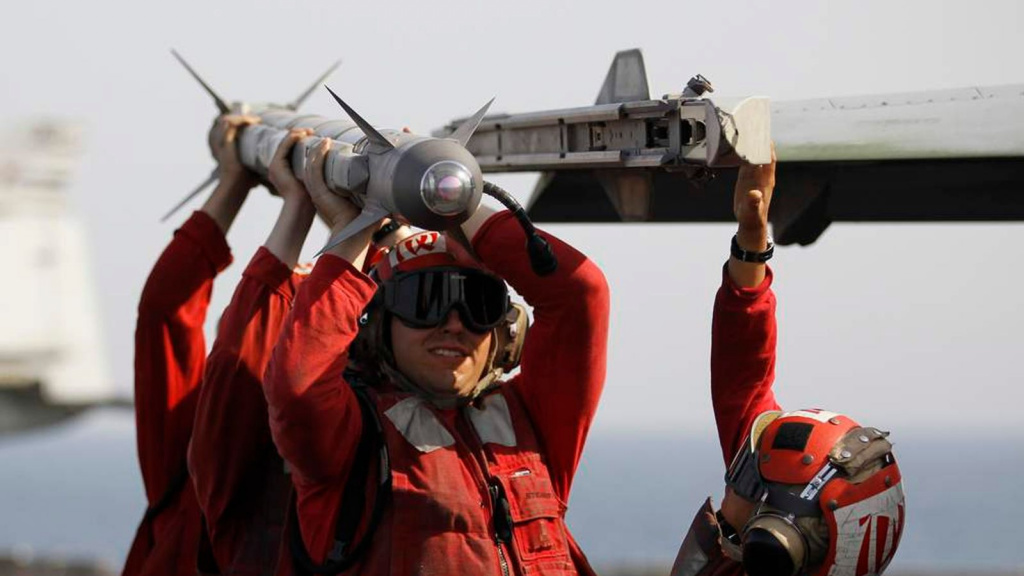Geopolitical concept of an air power
In
Log in if you are already registered
In geopolitics, the actors of international relations are classified as sea power and land power according to their main power trajectory during military operations. Land power operates its army in terrestrial areas more successfully while sea power projects its forces along the maritime routes more operatively. For example, Russia and China are categorized as land powers and the US, the UK, and Japan are in the basket of sea powers. The other geopolitical domains of air, cyberspace, and open space are usually seen as developing fields without any leading actor and clear classifications. These domains play generally supportive roles in warfare targeting supply chains, warehouses, and infrastructure besides intelligence and communication purposes. Air forces are more developed among these three areas, causing direct human casualties and deploying para-troops on battlefields. Furthermore, Israel is developing distinctive features belonging to an air power as sea and land powers possess.

Source: sky.news
The features are concluded from studying the Arab-Israel wars, the Hamas-Israel war, and the military potential of Israel. When Israeli aviation launched a destructive decisive surprise attack on Egypt in 1967, the outcome was pinned as a masterful command tactic. However, the recent clashes with Hamas demonstrate that Israel has transformed a full-scale an air power with its typical features. The essence of this conclusion stems from a number of reasons.
Firstly, the ground forces of Israel cannot reach their goal of releasing hostages from Hamas and are meeting unprecedented casualties against a military group – even not a state actor, while Israel Air Forces (IAF) is curbing Hamas from conducting active on-land operations out of tunnels. Moreover, land-to-air defense systems protect the security of the country from missiles launched by Hamas while ground forces failed to keep the border safe on October 7.
Secondly, the land forces and air forces exchange their roles in the Gaza war. The land forces of Israel are playing a supportive role in territories where the Air Forces have imposed main casualties. To compare, the Russian ground army in Ukraine is deployed in major battles while Russian aviation conducts supportive operations.
Finally and most significantly, the current state of air forces corresponds to “Laskov’s military doctrine”. Colonel Chaim Laskov proposed “a strategy of attrition” to destroy maximum Arab war resources; “geographic pressure” to fight a war in the enemy’s territory; and “a short war” to avoid economic and spiritual burdens that Israel could not sustain. In the current situation, Israel Air Forces appears to have the potential to conduct a war following this doctrine.
Features of an air power
Israel exemplifies the early form of what features an air power could possess. In the Israeli case, compact territory, surface-to-air defense systems, and competent air forces are inseparable elements. In hypothesis, the land-to-air defense system of an air power must enlarge in correlation with the territory occupied by air forces. Land forces are relegated to the supportive units position maintaining civilian control and security areas where the air force has destroyed the enemy’s main forces. The annexation potential of an occupied territory depends on the defense coverage of land-to-air systems that prevent the territory from attacks or counter-attacks of the enemy.
As land powers and sea powers send military expedition units to their opponents, an air power also could send expeditions. Israeli assault with aviation on Yemeni Red Sea city can be a clear example. As long as an air power cannot provide defense systems, it cannot deploy supportive land units and annex the territory. This is because land and sea forces of an air power could be inefficient and insufficient to maintain sovereignty over the annexed area without the support of high-tech systems.
Why does a country transform into an air power and why do the land and sea forces become incapable of keeping security in annexed territories? From the point of the Israeli case, the main reason is the rise of human economic costs due to education and moral costs due to ultra-nationalist views in society. Every human loss brings economic loss of human capital or moral trauma in the community. In this condition, a government must build costly and safe air force units and drone armies. According to these principles, besides Israel, Singapore may become another an air power, although it cannot be determined since Singapore has not participated in wars recently.
Rafael Advanced Defense Systems and Israel Aerospace Industries are two major aerial defense systems producers in Israel. Both companies manufacture more than 28 weapons included in the toolkit of an air power. Most of the aircraft missiles are adapted to be carried by American jets which demonstrates how the Israel Air Force is dependent on American aircraft. The Air Forces consists of 280 combat aircraft all of which are American-made jets (F-15 Eagle, F-16 Fighting Falcon, and F-35 Lighting II). While the United States is the primary supplier of Israel, Azerbaijan, and India are among the main clients of Israeli weapons.
Weapons of an air power produced by Rafael Advanced Systems and Israel Aerospace Industries
| Weapon | Type | Manufacturer | Price | Range |
| Iron Dome | short-range multi-mission air defense system | Rafael Advanced Defense Systems | US $60 000 | 4-70 km |
| Spyder | medium-to-long-range air system | Rafael Advanced Defense Systems |
| 40-80 km |
| David's Sling | medium-to-long-range air system | Rafael Advanced Defense Systems | US $700 000 | 300 km |
| SkySonic | hypersonic missile inceptor (5-10 Mach speed) | Rafael Advanced Defense Systems | US $700 000 | 20-70 km |
| Drone Dome | anti-drone system | Rafael Advanced Defense Systems |
|
|
| Iron Beam | laser weapon system | Rafael Advanced Defense Systems |
| 0,1-2 km |
| Spice | air-to-surface guidance kit | Rafael Advanced Defense Systems | US $480 000 | 60-125 km |
| Ice-breaker | long-range air-to-surface autonomous missile | Rafael Advanced Defense Systems |
| 300 km |
| Rocks | long-range air-to-surface autonomous missile (1 Mach speed) | Rafael Advanced Defense Systems |
| 300 km |
| Aerospike | EO-guided air-to-surface missile | Rafael Advanced Defense Systems |
| 30 km |
| I-Derby | short-to-long distance air-to-air missile | Rafael Advanced Defense Systems |
|
|
| Python 5 | air-to-air defense missile | Rafael Advanced Defense Systems |
| 20 km |
| Sky Sting | Long-range air-to-air missile | Rafael Advanced Defense Systems |
|
|
| Arrow | anti-ballistic missile | Israel Aerospace Industries | US $3 000 000 | 90-150 km |
| Barak | surface-to-air defense missile | Israel Aerospace Industries |
| 35-150 km |
| Sky Capture | air defense system | Israel Aerospace Industries |
|
|
| Heron | Surveillance drone (52 hours flight) | Israel Aerospace Industries |
|
|
| BirdEYe | Surveillance drone (15 hours flight) | Israel Aerospace Industries |
|
|
| Thunder B | Surveillance drone (12 hours flight) | Israel Aerospace Industries |
|
|
| Rampage | air-to-surface missile (1-1,6 Mach) | Israel Aerospace Industries |
| 150-250 km |
| Rotem | Loitering drone (30-45 minutes) | Israel Aerospace Industries |
| 10 km |
| Mini Harpy | Loitering drone (2 hours) | Israel Aerospace Industries |
| 100 km |
| Harpy | Loitering drone (9 hours) | Israel Aerospace Industries | US $70 000 |
|
| Harop | Loitering drone (6 hours) | Israel Aerospace Industries | US $10 000 000 | 200 km |
| Mini Harop | Loitering drone (1,5 hours) | Israel Aerospace Industries |
| 50 km |
| ELW Special Mission Aircraft series | Surveillance | Israel Aerospace Industries |
|
|
Limits of an air power
The economic-burdening and complex nature of technologies used for air offense and defense systems and the costs of training personnel expose the limits of an air power. The case of Israel’s last war with Hamas demonstrates that Israel has to respond with a missile costing around US $60,000 to Hamas’s about US$600 rockets. It is the scenario that every an air power may meet unless the marginal costs of missiles drop.
Secondly, offensive brigades of an air power consisting of combat jets, helicopters, and drones are unable to fully de-militarize the enemy’s ground forces. The Dahiya doctrine which intends the destruction of civilian infrastructure to pressure the community not to unite as a military resistance shows its ineffectiveness in Lebanon War in 2006 and Gaza in 2008. Despite civilian destruction, the resistance forces in both territories have survived and successfully developed their military capacities against Israel.
Conclusion
To summarize, Israel is an early form of an air power independent from land and sea powers. The Israeli case is characterized by compact territory, land-to-air defense systems and combat aircrafts. According to these principles, Azerbaijan, Singapore, and Baltic states could grow as an air powers. Azerbaijan has already promoted how masterfully its army can operate drones in the Nagorno-Karabakh war. Laskov’s military doctrine reflects the geopolitical character of Israel and other an air powers. Due to the high costs and complexity of technology production, only countries with compact territories could provide substantial defense systems that cover major parts of the area. As the current an air powers are small countries, the “few against many” principle is compatible with them. These countries need a “war of attrition” to keep the enemy’s military potential under control. The economic pressure surmounts with the loss of morale when a war is prolonged. It makes an air power conduct “a short war” to avoid internal dysfunctions.
In the Israel case, the country strongly depends on financial and military aid from the United States. Moreover, the Israel Air Forces also consists of air jets that are made in the US, and missile products of Israeli defense companies adapt their weapons to American jets. The success of an air power in war is correlated with the time length of war and the scope of attrition or violence during this timeframe as the resources of an air power are limited.
Founder and chief coordinator of Technology in Global Affairs
Blog: Shakhboz Juraev's Blog
Rating: 0




